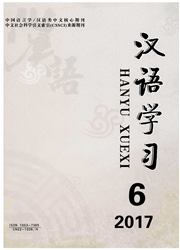

 中文摘要:
中文摘要:
"好像""似乎""仿佛"作推测副词时是肯定性的,一般情况下三者的使用更像是一种交际策略,无论在语义、句法还是语体上三者都存在差异。"好像""似乎""仿佛"所表否定是一种隐性的预设否定,说话人为了让受话人做出正确的否定性推导,常常需要将预设否定显性化。如果"(S)VP"的命题内容违反一般常理或常识,"好像/似乎/仿佛+(S)VP"不借助显性否定,仍可以构成否定表达,受话人可以利用自身的知识结构推导出预设否定。"好像""似乎""仿佛"否定义的规约化还有待进一步观察。表预设否定的"好像""似乎""仿佛"是动词,现代汉语中"似乎"动词用法的萎缩是从带体词性宾语开始的,这源于口语中"好像"对它的取代。
 英文摘要:
英文摘要:
"Haoxiang", "sihu" and "fangfu" that used as adverbs are positive,and sometimes it is like a communication strategy to use them.In semantics,syntax and style there are many differences among the three adverbs.The negative is a kind of implicit presupposition negation of "haoxiang", "sihu" and "fangfu",and in order to lead hearer or reader comprehend the negative meaning,the speaker often need to make it explicit.If the meaning of the(S)VP violated to common experience, "haoxiang", "sihu" and "fangfu" still can make negative expression without the using of explicit negation,in that the hearer or reader can analyze it with their own knowledge.The negative meaning of "haoxiang", "sihu" and "fangfu" has not fossilized and the process remains to be seen. "Haoxiang", "sihu" and "fangfu" with the negative meaning are verbs,and the verb function of "sihu" has weakened owing to the replacement of "haoxiang" in spoken language.
 同期刊论文项目
同期刊论文项目
 同项目期刊论文
同项目期刊论文
 期刊信息
期刊信息
